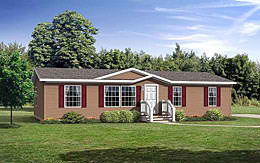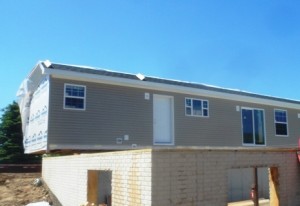What are precast concrete panels? Are they a viable alternative to traditional brick and mortar construction? To understand what are the precast concrete panels, go through the following paragraph;
Precast concrete panels have been used in the commercial construction industry for years, but have only been introduced to the modular home construction market recently.
What are Precast Concrete Panels?
Precast concrete panel construction takes a different approach compared to traditional brick or mortar construction. Precast concrete is used to ensure the building is structurally sound and energy efficient. Working from plans, entire walls, complete with door and window openings where specified by the manufacturer and general contractor. Precast concrete panels are cast in moulds and when cured, cranes put them precisely into place. After the walls are bolted together, top plates and roof trusses are installed, and then the concrete floor is poured. This entire process can take as little as a week to complete.
Precast Concrete Panels Introduced by Superior Walls®
Precast concrete system is introduced by Superior Walls® and features superior strength and insulation for the creation of dry, warm and energy-efficient foundations. The system can be custom-made for the exact needs of each project like modular homes. Precast concrete wall systems use 70 percent less concrete in a new home than conventional foundations.
A four-inch standard floor slab may be poured equal to the height of the footer beam eliminating the need for an additional screed board, which saves time and money in the construction process. Precast concrete are now available with a built-in insulation value of R-21 and can be insulated up to R-42+.
Advantages of Building with Precast Concrete Panels
Construction speed is one of the advantages of building with precast concrete panels, but modular home builders say there are many more, including the protection against structural damage, high insulation rate, lesser construction waste and cost effective building such as the modular home.
The thermal insulating properties of precast concrete panels are very good. Combined with ceiling and internal wall insulation, a precast concrete home is estimated to be able to cut heating and air conditioning costs by up to 50 percent.
Precast concrete panels provide protection from white ant infestation and are highly termite resistant. Construction waste materials are virtually eliminated. Precast concrete constructions are also highly resistant to environmental factors such as earthquakes, bushfires, cyclones and floods.
The panels can be constructed on site, but are most cost-effectively factory built and must be delivered by truck. A crane is needed to lift the heavy panels and move them into place. Because of the necessity of using heavy transport and equipment, it may not be a viable building material for hard-to-access sites. Builders, too, are hesitant to adopt the practice, since most builders are not equipped for this type of construction. On the other hand, building with precast concrete panels may catch on and become the future of the Australian building industry. Time and market demand will tell.
In case you still have question about modular homes and insulated precast foundation, you may contact Legendary Homes Inc in Jackson, Michigan. A representative will be happy to assist you. Meanwhile you can check our modular home price sheets by signing up to our blog









